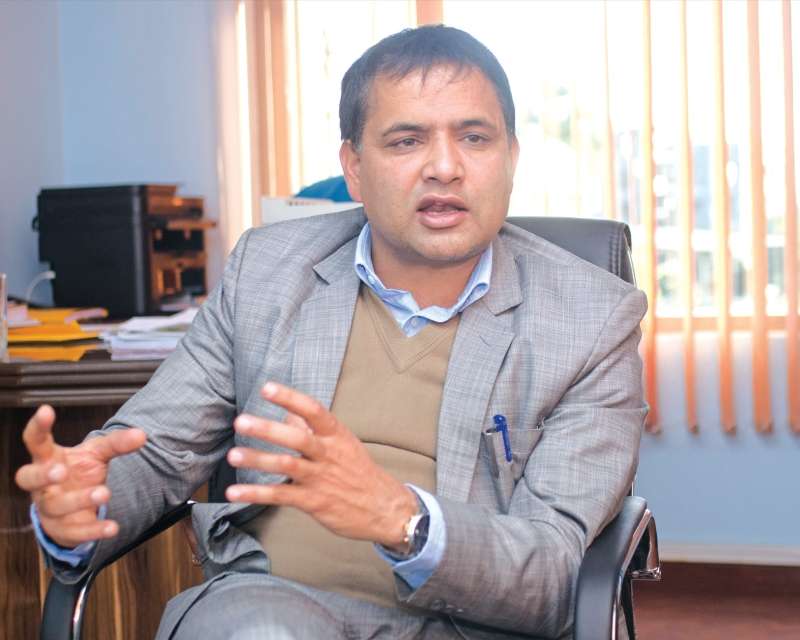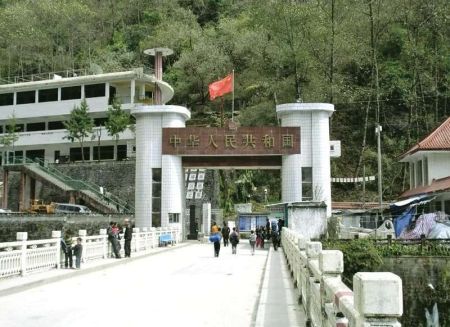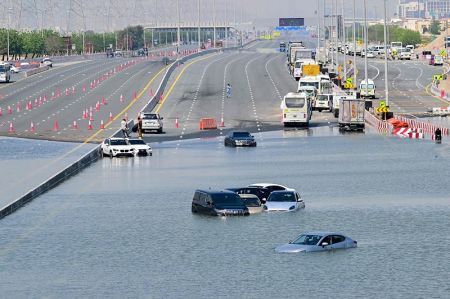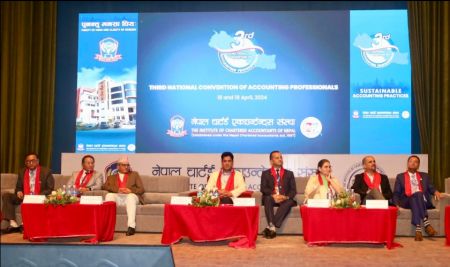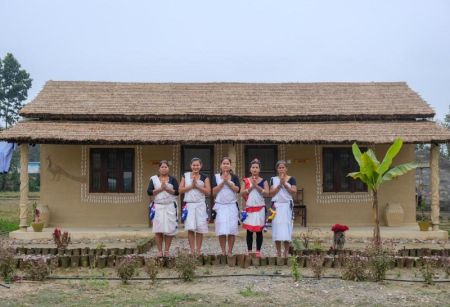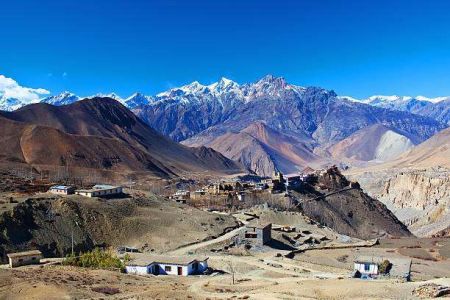Hydropower Investment and Development Company Limited (HIDCL) was established in 2011 by the government as a Special Purpose Vehicle (SPV) to expedite hydropower development by forging partnerships with the private sector, filling resource gaps, and attracting and facilitating foreign capital in hydropower projects. So far, HIDCL has invested Rs 6.78 billion in 14 different projects with a total installed capacity of 541 MW with its major investment undertakings being the 426 MW Phukot Karnali Hydropower Project, 37.6 MW Kabeli-A, 82 MW Lower Solu Khola Hydropower Project and the 42 MW Mistri Khola Project. HIDCL in 2015 also established Remit Hydro Limited (RHL) as its subsidiary with an aim to mobilise in hydropower development the money Nepal receives as remittance. Currently, RHL is in the process of developing the 71.5 MW Ghunsa Hydroelectric Project. Chhabi Raj Pokhrel who was earlier engaged with the Poverty Alleviation Fund as its Deputy Executive Director took up the helm at HIDCL as its CEO in October 2016. In an interview with Sabin Jung Pande of New Business Age, Pokhrel explains the progress made by HIDCL and its future plans in hydropower sector development. Excerpts:
How has the seven year journey been for HIDCL? What major accomplishments of the company would you like to highlight in the period?
HIDCL was established with a view to support investment in the hydropower sector. It primarily works under the modality of debt financing of government and private sector investments in hydropower projects. Our paid-up capital is Rs 10 billion where public institutions hold 80 percent of our shares and the general public holds 20 percent. As of now, we have invested Rs 6.78 billion as debt in 14 different projects with a total capacity of 541 MW. Similarly, we have equity financing of Rs 350 million in five different government companies. Altogether, we have already mobilised Rs seven billion in the hydropower sector. So far, we have made a gross profit of Rs 1.42 billion, paid taxes amounting to Rs one billion and distributed Rs 1.40 billion as dividend
to our shareholders.
We have decided to invest in the equities of the government-promoted large hydropower projects from the current fiscal year. In this connection, HIDCL has invested Rs 1.26 billion as equity financing in the Phukot Karnali Hydropower Project, a peaking run-of-the-river type with an installed capacity of 426 MW initiated by the Vidhyut Utpadan Company Limited (VUCL). HIDCL holds four percent of the promoter share in the government-owned hydroelectricity generation company.
In terms of returns, we had clearly stated during our IPO that we will distribute a four percent cash dividend for the FY2073/74 to our shareholders. In fact, we were able to distribute five percent. We are working out on how to increase returns to our shareholders in the future. Recently, we drafted a five year business plan which envisages distributing the cash dividend at 10-15 percent for the shareholders. HIDCL has also a developed a project bank for future financings. Up to now, 14 projects are in the pipeline and under review.
How is HIDCL facilitating private sector investments in hydropower development?
We all know that the government’s sole initiative isn’t enough for Nepal’s power sector development. Private sector investment is equally needed and should be supported. If you closely observe the government’s contribution in the overall power sector development in the last 107 years and private sector’s contribution in the last 19 years, the private sector has increased rapidly. With this pace, private power projects are expected to exceed the generation capacity compared to the government-promoted projects in a few years down the line. We are here to facilitate the capacity of the private sector by forging partnerships and financing their investment gap and attractig and facilitatating foreign capital in the hydropower projects.
A few months ago, HIDCL unveiled a Rs 36 billion investment plan for the hydropower sector spanning the next five years where it plans to invest in the projects initiated by Independent Power Producers (IPPs). Could you elaborate more on this plan?
Our investment plan is to mobilise Rs 36 billion in 31 different projects having a total generation capacity of 3,237 MW. We are planning to make equity investments in eight private sector projects and debt financing in 18 private sector projects. Similarly, we also plan to invest in five government institution financed projects which Nepal Electricity Authority (NEA) and the VUCL plan to initiate. Our financing will stay within the limit of 25 percent of the project costs. The rest will be generated by the project themselves.
HIDCL plans to generate the planned financial resource by utilising funds from the BFIs, public institutions and the general public. Meanwhile, partnering with foreign financial institutions for lucrative projects is another alternative. We will also approach for concessional loans from bilateral and multilateral development partners and financial institutions like The World Bank, Asian Development Bank (ADB), International Monetary Fund (IMF) and Asian Infrastructure Investment Bank (AIIB). While the company has already started work with The World Bank and ADB for resource leverage, discussions with AIIB and other institutions are in progress. We may issue bonds and debentures too. All these options are inscribed in our Financial Resources Mobilisation Policy.
HIDCL is also thinking about developing a new investment window through which we can build partnerships with foreign power development companies. We have already identified two projects. The projects are the 71.5 MW Ghunsa Khola Hydropower Project and 53.7 MW Sinbuwa Khola Hydropower Project. Currently, the projects are being studied and under discussion for their financial closures. The Department of Electricity Development (DoED) has already awarded the licenses for these two projects to our subsidiary Remit Hydro where we will invest 25 percent of the total project costs. We are planning to attract the remaining investment from foreign power development companies as our strategic investment partners.
Private power investors have also been gearing up their investments and plants in recent years. What difference has HIDCL made in the power sector when private investors are already active?
Firstly, rapid development in the hydropower sector requires leverage of foreign capital. To attract foreign capital, Nepal needs a credible institution that foreign institutions can work with. HIDCL was established under the same spirit to raise a reliable institutional partner that development partners, foreign lenders and investors can rely on to work with.
Secondly, the core objective of HIDCL is to contribute to power sector development by bridging investment gaps such that feasible projects don’t stay in limbo due to lack of finances. Our intention is not to stick with the projects forever. Rather, HIDCL aims to finance feasible projects and ensure their smooth operation for the next 5-10 years once the construction phase ends. Once the project displays operational capacity, our strategy is to sell off our part of the stakes and switch to developing new projects. Our objective is not to make immense profit, but to facilitate capital flow for hydropower sector development.
Thirdly, HIDCL is equipped with technical expertise. We assess the technical and financial viability of projects and carry out due diligence audits for the projects financed by the private sector and commercial banks. We also guide them technically when needed. By further developing our expertise base and increasing our lending capacity, HIDLC envisions financing large hydropower projects in the future in collaboration with foreign investors and financial institutions.
HIDCL has co-financed 14 hydropower projects. How are the projects progressing?
The overall progress of the projects is evaluated by two departments. Our Project Analysis and Evaluation Department headed by Deputy General Manager oversees the hydro division and assesses geological and environmental risks and whether the project is technically viable or not. The Finance and Administration Department evaluates financial viability of the projects. As we follow stringent practices during these assessments, our projects are progressing pretty well so far. But there is always the risk of project cost overruns and we aren’t immune from it either. Once the construction costs escalate, it affects pricing and eventually consumers too. The government should be ready to cooperate with hydropower developers and search for cost minimisation options.
As most of the construction components are underground, hydropower projects have to go through a number of geological uncertainties. For example, challenges may arise in tunnel construction. Two of our projects are facing similar challenges. In one of these projects, there was cavity formation during the tunnel work. Finding technical solutions is not easy in such situations which not only delays the project but also increases the project costs. Other projects are progressing according to their schedule.
To be honest, Nepal’s hydropower project suffers mostly due to lack of proper planning. Project infrastructure roads aren’t built with proper planning. A number of our projects under construction are facing uncertainties over the power evacuation mechanism. Although the existing arrangement has provisions in place so that project developers are entitled to government compensation for any loss due to lack of an evacuation mechanism, it will still be a loss to our national coffers. In addition, there is weak inter-ministerial and departmental coordination. Ministries and departments should play the role of facilitators, but projects are facing hardship due to ineffective coordination. The government has fully prioritised hydropower and transmission projects in its planning documents but it doesn’t reflect in inter-institutional coordination.
We believe that private sector role is crucial in the hydropower sector development. In this regard, we along with Independent Power Producers are consistently offering policy feedback to the government to curb inter-institutional inefficiencies and bureaucratic hassles and bottlenecks.
HIDCL has injected capital in the Power Transmission Company Nepal Limited (PTCNL). How do you view the progress of PTCNL after the capital injection?
PTCNL aims to facilitate cross-border power trading. It recently completed the Dhalkebar-Muzaffarpur cross-border project. The project has started yielding returns as well. So far, we are only importing electricity through the Dhalkebar-Muzaffarpur transmission line. PTCNL’s work has been satisfactory so far, but a single transmission line in its portfolio will not help it to sustain itself in the future. PTCNL needs to explore other markets and I hope it will soon figure out the opportunities. HIDCL is tactfully working in this regard as transmission lines is one of our key interest areas. Obviously, there will be areas for strategic cooperation and investments. We have identified 3-4 transmission points based on assessment of demand for electricity in India and China.
How is the unbundling of NEA progressing?
It had been very difficult for NEA to efficiently manage its entire functions relating to the energy sector. Realising that it was time to form separate companies for different functions, VUCL and Rastriya Prasaaran Grid Company Limited (RPGCL) were established, although a separate company for power trading is yet to be formed. The formation of HIDCL can also be viewed under the same light as we are separately tasked with managing the investment funds for hydropower projects.
Earlier, the internal transmission service was provided by NEA, which is now looked after by the RPGCL. At present, RPGCL is designing a master plan that will chart out transmission projects across the country based on federal structure and priority levels. We are helping them with policy feedback and other suggestions. We believe the plan will be unveiled soon. Injecting capital in their projects is also part of our business plan.
NEA Engineering Company Limited is another government company established with a view to provide engineering solutions to hydropower and other infrastructural projects and create a competent workforce in the area of hydropower. HIDCL holds a 15 percent stake in the engineering company while NEA holds 51 percent and VUCL and RPGCL hold 17 percent each.
HIDCL is a SPV set up by the government to invest in the hydropower sector. How do you think the government will meet further investment gaps in the hydropower sector?
In the last budget, the government announced to generate 17,000 MW in seven years. Likewise, the major political parties have presented various ambitious goals in hydropower development in their latest election manifestoes. Nepal will require Rs 300 billion investment grade capital to generate more than 10,000 MW of electricity. In the next five years, our banks and financial institutions may not be able to inject more than Rs 50 billion in this sector. Unfortunately, there is no strategy to plug the investment gap of Rs 250 billion. There is nothing written about whether the government plans to provide guarantees to foreign lenders or implement various project models such as engineering, procurement, construction and financing (EPCF). We neither have any rigorous assessments about the required capital, workforce and expertise and how we plan to fill such gaps. Honestly speaking, we don’t even have a project bank with profiles of readily available projects to sell to foreign investors.
Earlier, NRB, despite offering attractive interest rates of up 10.5 percent, couldn’t attract remitters in bond purchases. In this context, how is HIDCL’s subsidiary RHL mobilising remittance for hydropower development?
RHL was established as a special window to channel remittance income to hydropower projects to ensure that the hard earned money of migrant workers is invested in a productive sector back home. Unlike bonds, it is an equity investment which will yield higher returns in the future in form of stock and cash dividends. As the project will continue for 30 years, it will also serve as a pension fund for the remitters in the future. I hope that the government will implement the right policies to ensure that public investment will stay secure even after 30 years when the project will automatically transfer to the government’s possession.
RHL’s strategy to channel remittance income has received positive feedback. Remittance income is mostly spent on consumption and other unproductive areas. Even after years of overseas employment, people return to their earlier financial state once they are home due to lack of investments that can guarantee regular returns for them. Through RHL, we are offering a secure investment option to the migrant workers on behalf of the government. During the construction stage of the projects, we will develop an investment modality that will enable migrant workers to deposit their income through electronic transfers at RHL’s accounts based on their migration ID.
The deposited money will be converted into shares.
What is your take on signing the Power Purchase Agreement (PPA) in dollars?
By signing the PPA in dollars, we aren’t prizing investors. It is our fault that we have a weak currency exchange due to our economic frailties. No investor would want to risk their investment in the economic state we are in. We will be in a satisfactory position in terms of our forex value once we are able to create a robust economy and our currency appreciates against the US dollar. Meanwhile, we must ensure an effective way to mitigate the financial risks that may arise in our economy with PPAs in dollar value.
Bureaucratic hurdles are some of the major complaints from Nepali and foreign hydropower investors. Being a state-owned entity, how do you manage bureaucracy within HIDCL?
HIDCL has full autonomy in its operation and decision making. Yet, it fully focuses on effective corporate governance. Our leadership comprises of several secretaries from different ministries and public institutions. As we focus on large and medium scale projects, it definitely requires a considerable time for decision making due to the capital intensity.
The reputation of public sector organisations has diminished in Nepal due to mismanagement. HIDCL is focused on practicing high ethical standards in its business. We have developed a standard investment appraisal template endorsed by the board that we follow while assessing all the investment proposals. We even suggest project developers to drop their projects if the project is financially and technically unfeasible. There are no bureaucratic hassles as such in decision making.
The two divisions Project Analysis and Evaluation Department and the Finance and Administration Department report to the CEO. Together, we form a management committee. We take collective decisions based on the recommendation of our team and send it to the board for approval which is also reviewed by a risk management committee.
HIDCL can also generate financial resources by availing soft loans from foreign lenders. How are you working to get such loans?
We are negotiating with the ADB for a Line of Credit (LoC) amounting to USD 50 million to finance 5-10 hydropower projects. Once we successfully receive and mobilise the USD 50 million LoC, we will apply for even larger funds. ADB has advised us to stay away from projects that have severe environmental and resettlement issues unless our capacity to manage such issues improves. Currently, we are availing technical cooperation from the ADB for capacity enhancement in the areas of environmental and social safeguard management and financial, project and credit risk management systems. Once we reinforce our capacity, we will look into financing such projects too. Similarly, we are also facilitating lending USD 40 million to the 37.6 MW Kabeli-A hydropower project as sub-lender. The World Bank Group had loaned the amount to the government. As the government cannot lend directly to the private sector project, the project has received funds through us.
As a co-financier, what responsibilities fall under the jurisdiction of HIDCL when it lends funds to the projects?
As we don’t fall under the jurisdiction of Banks and Financial Act (BAFIA), we don’t have the right to be a lead financing agency. We lend to the projects along with commercial banks through consortium financing. The lead bank under the consortium financing takes up the entire responsibility from disbursal of loans to recovery. The fund disbursal basis and schedule is clearly outlined in each project agreement. The technical team of the lenders appraises the progress of the project, monitors them and disbursals are made based on such progress. The technical team of the HIDCL and our expert board members also monitor the projects. We are preparing a monitoring framework guideline to bring uniformity in the monitoring process of HIDCL, NEA and commercial banks across the projects financed by us.
Talking about taking a lead in the consortium financing, we had sought such rights earlier from NRB. It has advised us to focus on leveraging finance for potential projects which actually is our core responsibility and avoid engaging in complicated processes that may divert our focus. NRB has further suggested us to think along the lines of converting HIDCL into an infrastructure bank if we really want to take the lead in the consortium financing which can be a good idea for us in the long-term. Although it is not our priority right now as we have an investment plan to execute for the next five years, we will think about it in the coming years.


